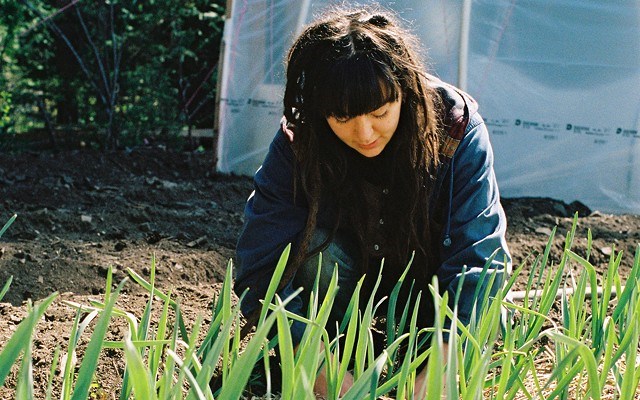How many years in a row have you glanced at melting snow and promised yourself this is the summer you'll finally plant that vegetable garden, only to wake up one morning in August, gardenless, vowing that next year will be it?
Well, if that multi-year streak lasted longer than you intended, there's never been a better time to develop a green thumb than now.
Unsure where to start? Kathleen Mercer, a longtime member of the Squamish Gardeners Club, encourages aspiring gardeners to keep it simple and start small.
"The thing I always think about is, 'What do you want to eat? What do you want to grow?'" said Mercer, who worked for the Resort Municipality of Whistler as a professional gardener for a decade before earning a journeyman certificate in horticulture. "What's the point of growing something if you don't like it?"
New gardeners should also consider starting, "with the basics, like peas, carrots and beets," added Rachelle Walker, an amateur gardener who shares a tiny home with her partner Elliot Fromowitz, a professional grower, in Birken. The couple's garden, however, is, "easily six times bigger—maybe 10 times bigger," than their house, Walker said with a laugh.
She recommends beginning with the aforementioned basics because, "they're easy to sow directly into the ground—as long as you keep them watered, they should pop up." For products like broccoli and cabbage, Walker suggests buying veggie starts from the numerous local farmers who sell them.
When it comes time to plant, Mercer advises sticking to raised garden beds.
"The soil heats up faster because it's above ground and temperature is the biggest indicator for germination, especially in direct sowing, so the earlier you can get started, the faster you can get your vegetables growing," she said.
"When you're [planting] in a raised bed, say 18 inches or higher ... that will warm up quite a lot quicker than if you were digging down into the ground."
Floating plastic row covers could also be used to heat up the garden bed even more, as well as protect your fledgling veggies from harsh sunlight, wind or wildlife, Mercer added. (She recommended against planting berries, as sweeter fruits can attract bears.)
For those living in condos without yard space, "You can also do a lot of really neat things with smaller containers," she said. "As long as they've got good drainage, they're deep enough and wide enough to accommodate some vegetables, then you can just about do anything."
Container gardening is definitely trending, Walker agreed. "If you have a deck, it makes your space really beautiful and efficient," she said. "You can easily plant lettuces and broccolis, and I think we've even seen onions in little container gardens before."
Community gardens are another great option for those with outdoor space constraints, Mercer added.
Another tip: When buying seeds or plant starters, opt for plants with a shorter germination period. With the Sea to Sky's growing season typically lasting from May to September, "when you're looking at the seed packet and you see something that says 120 days, you know it's going to take all summer to get to where it needs to get to," Mercer said.
If growing veggies isn't enough to fill the DIY-sized void in your life, follow Walker's lead and plant a variety of dye flowers—blooms like Dyers Chamomile, marigolds or hollyhocks can be used to naturally colour clothing and textiles. (Physically distanced) tie-dye party, anyone?




